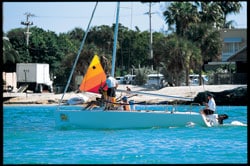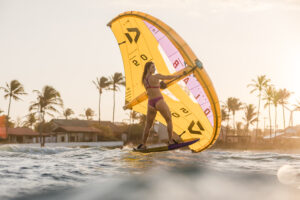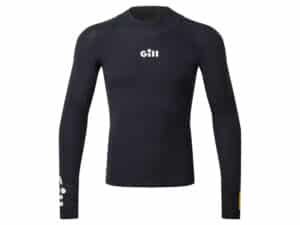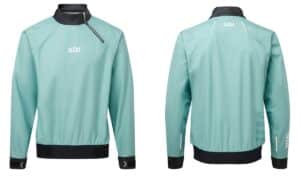When you’re facing strong winds and you need to get somewhere fast, it’s time to break out a small outboard such as an aluminum genny. A dependable outboard that has enough horsepower to get you to the racecourse and back, yet is light enough not to be a drag on your race results, is invaluable. Most racing sailors don’t need as much horsepower as they might think.
An eight-horsepower outboard, for example, will push a 30-foot, 6,000-pound boat along at 6.5 knots. Anything bigger will weigh more than 90 pounds and isn’t suitable for lifting on and off the stern. Here’s our roundup of some of the best outboard motors for sailboats, and some help in deciphering what’s right for your boat.

We focus our attention on engines available under nine different brand names. Two of the best-known names, Johnson and Evinrude, have dropped out of the small-engine end of the market as part of parent company Bombardier Corporation’s restructuring of these two companies. Currently they’re advertising the availability of six- and eight-horsepower four-stroke models in 2003. Another dropout in the mini-engine market is Suzuki. Their smallest two-stroke is a five-horsepower unit and in the four-stroke configuration, a 9.9 horsepower. Brand and corporate shuffling aside, of particular interest is whether the companies that are building nine horsepower- and-below engines have incorporated four-stroke technology into the lower horsepower range, since it’s now beginning to dominate the mid-sized and larger outboard engine market. The answer to that is yes, to a point.
Two or Four Stroke Outboards for Sailboats
Outboards are either two or four-stroke engines, and the four-strokes have definitely gained favor in recent years for several reasons: they’re quiet, they use much less fuel, and they run more cleanly. Since no oil is mixed with the fuel, the classic two-cycle smokescreen isn’t a factor. In a four-stroke, the piston reciprocates inside the cylinder four times for each power stroke (that is, each time fuel combusts). Rather than opening ports cut into the sides of the cylinder, intake and exhaust valves controlled by a camshaft allow a fuel/air mix to enter the combustion chamber with the suction created by the piston as it moves inward in its cylinder. Exhaust gases are forced out of the cylinder as the piston moves outward.
By carefully designing the camshaft, engineers minimize the amount of time that the intake and exhaust valves are both open, considerably reducing the amount of unburned fuel that exits with the exhaust stream. The end result? Fewer emissions and greater economy.
But they do have at least one distinct disadvantage for the racing sailor, and that’s weight. For example, four-stroke engines in the five-horsepower category are about 20 percent heavier than comparable two-stroke engines of the same horsepower. The good news, however, is that only amounts to between 10 and 15 pounds, depending upon the engine. Four-stroke engines cost more, also, but the improved technology may be well worth it.
If you’re totally weight and price conscious, you’ll want a two-stroke engine. But, if you think you can lose the weight elsewhere, a clean, quiet four-stroke without the hassle of mixing fuel could be the answer. In fact, Mercury/ Mariner’s newest six-horse four-stroke engines are actually 18 pounds lighter than their older two-stroke equivalents–a testament to the benefits of improved design and technology.
Environmental regulations are pushing manufacturers towards four-strokes as well. Four-strokes meet emission control standards, and US Environmental Protection Agency regulations mandate that new outboard and personal watercraft engines reduce engine hydrocarbon emissions by 75 percent by 2006. Environmentally conscious sailors should look for either a C.A.R.B. (California Air Resources Board) “very-low” or “ultra-low” designator, or a specification indicating 2006 EPA compliance.
How Much Horsepower Do You Need?
The amount of power you’ll need depends on several key factors. The first consideration is the weight of your boat. The second is the boat’s wetted surface. Full-keel boats not only weigh more but also have more surface area to push through the water. My rule of thumb here is to start with a two-horsepower engine for small centerboard and keelboats less than 1,000 pounds, and add one horsepower for every 1,000 pounds of displacement. For more exact, albeit complex formulae, I suggest The Propeller Handbook by Dave Gerr (McGraw-Hill 2001).
Compare your boat’s dimensions against what existing classes have found to work; for example, a Melges 24 at 1,650 pounds is typically rigged with a three-horsepower short-shaft engine, while a J/80 at 2,900 pounds can still squeak by with a long-shaft, three-horsepower engine. A 1,790 pound J/22, on the other hand, typically uses a four-horsepower long-shaft engine. On the larger end of boats using outboards, you’ll find the outboard version of the J/29, at 6,000 pounds, requires a 7.5-horsepower long-shaft engine.
If you are intending to do some cruising, or even long deliveries to regattas, an option that’s available on some engines is a high-thrust propeller. On larger boats, this option can save weight over a bigger engine and really make a difference when trying to punch through a strong tide or headwind. High-thrust props cost more and are less fuel efficient–but they can save weight and give you more power.
Once you’ve determined how big an engine you’ll need, the next step is to begin comparing features in the given horsepower range you’ve selected. There are nine manufacturers included in our roundup, but some of their brands are identical products with different labeling. In the smaller sizes, the Mercury and Mariner brands are identical. As for the Nissan and Tohatsu engines, Tohatsu builds them all. Yamaha, Suzuki, and Honda all offer competitive products as well, but they’re all independent brands.
What to Look For in Lightweight Outboard Motors
In the small engine sizes, specific features to look for can be reduced to several key items. For some, having an integral fuel tank will be important. The smallest engines have integral tanks that hold only a quart or two of fuel–good enough for an hour or two of operation. No manufacturer lists fuel consumption because the size boat the engine is pushing and the wind and wave conditions vary widely. Compare the size of the tanks, and whether you can attach a remote tank for longer trips. The extra weight and space of a separate fuel tank will be a burden on smaller ultra-light boats.
The availability of long- and short-shaft versions in the horsepower size you need is also important. Honda for example offers 20 and 25-inch transom height (long or short shaft) right down to their smallest BF2 (two-horsepower) model. Mercury and Mariner only offer a 15-inch short-shaft version on their 3.3- and 2.5-horsepower engines. Shaft length is measured from the top of the bracket to the tip of the shaft–make sure your shaft is long enough to position the propeller and cooling water intake deep enough below the waterline to avoid cavitation when the boat pitches through waves.
Other specifications that are worth comparing are whether the engine is equipped with a simple forward and neutral gearshift or if the unit has a full functioning forward-neutral-reverse gear unit. If you’re going to be doing long deliveries to regattas, or in the larger sizes for a racer/cruiser configuration, consider whether or not a charging system is part of the engine package, and if so, it’s output. Will it be adequate to keep your battery recharged and power things like a tiller pilot and running lights? Also, on the larger engines check to see if electric starting is available, or offered as a standard feature. Having it can be the difference between pain and pleasure.
If you are racing in a strict one-design group, check any class rules that apply to outboard engines. Issues related to brackets, storage of the engine and/or alternative weight might be issues, so be sure to check with your class before making any final decision.
Ed Sherman is the author of Outboard Engines, Maintenance, Troubleshooting and Repair, International Marine/McGraw Hill and a contributing editor to Sailing World.









